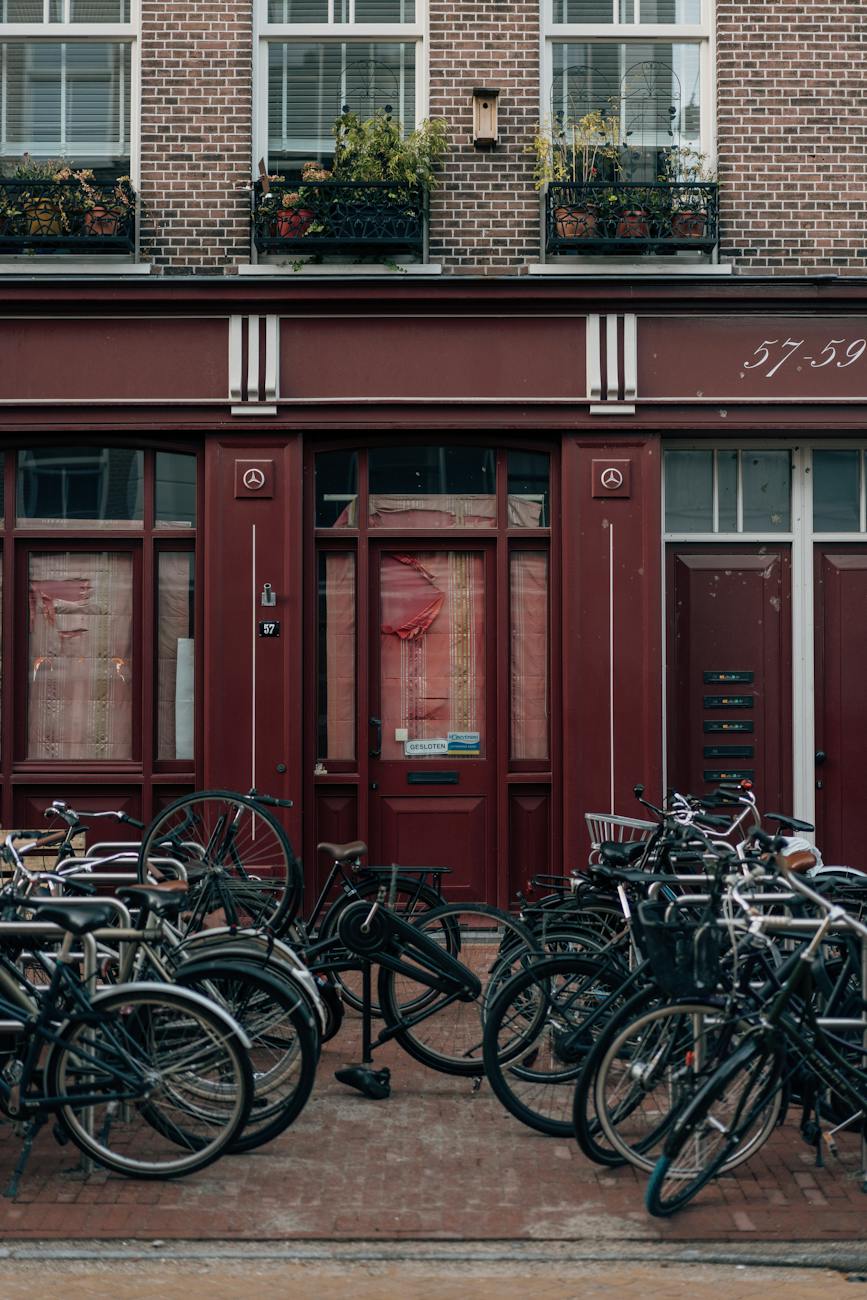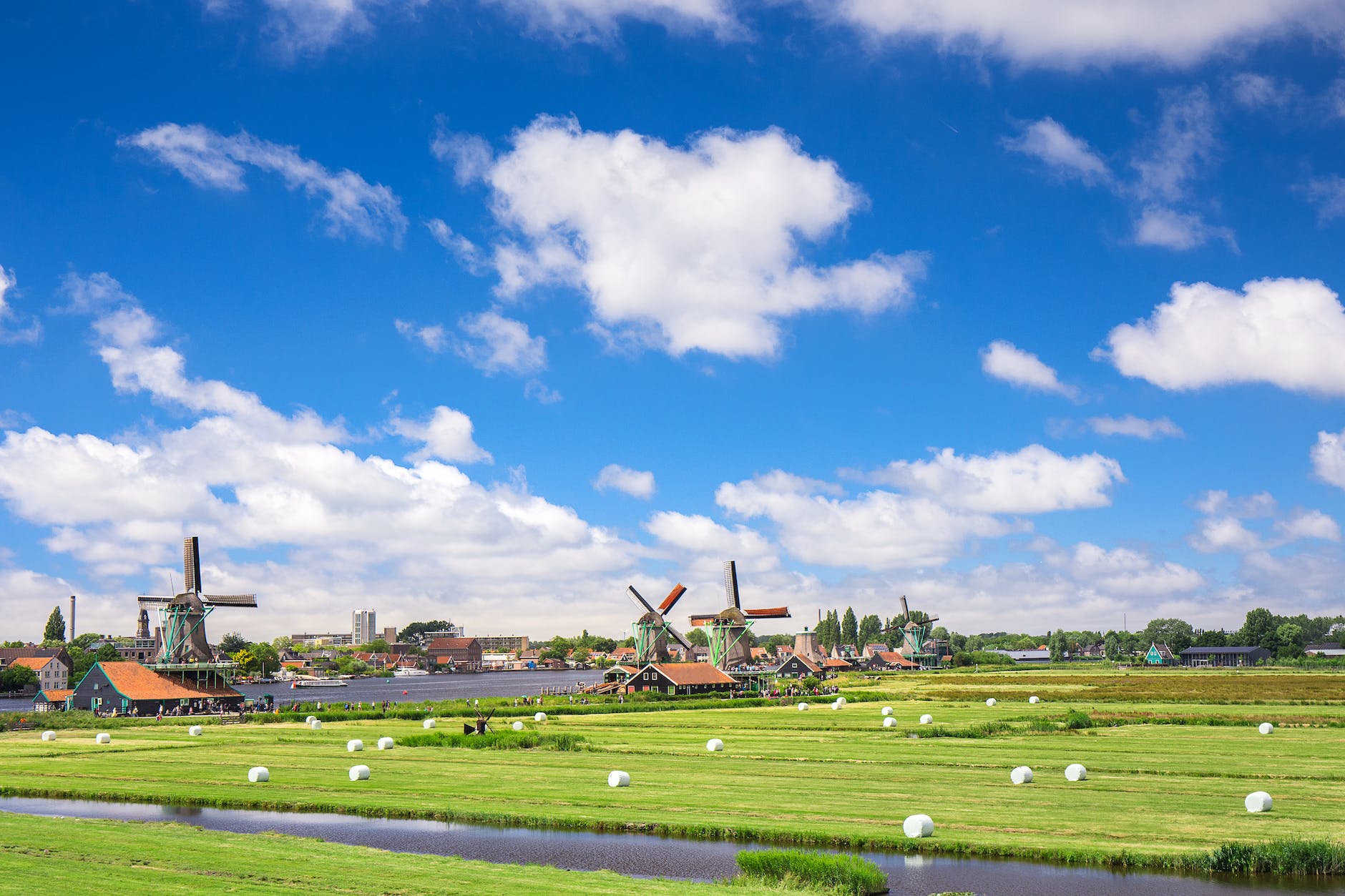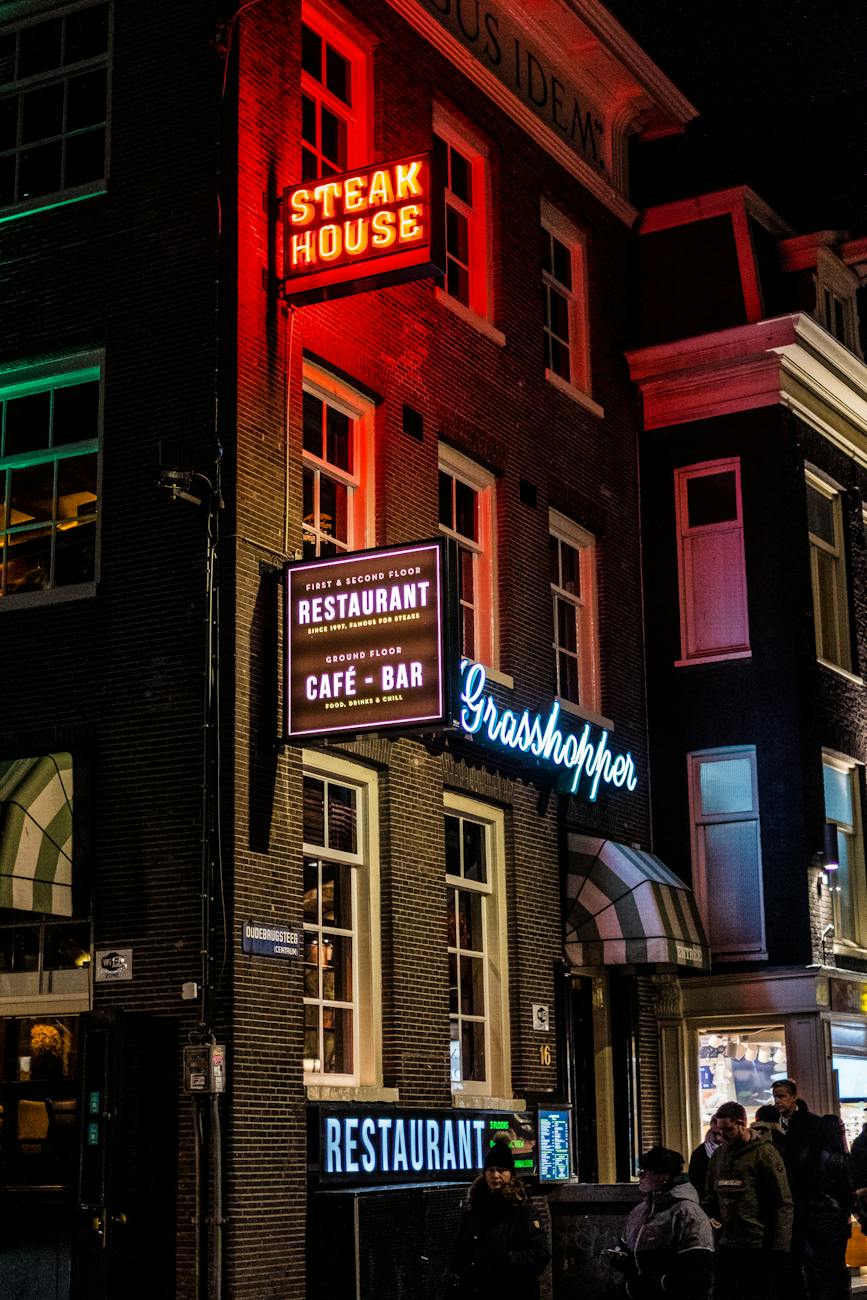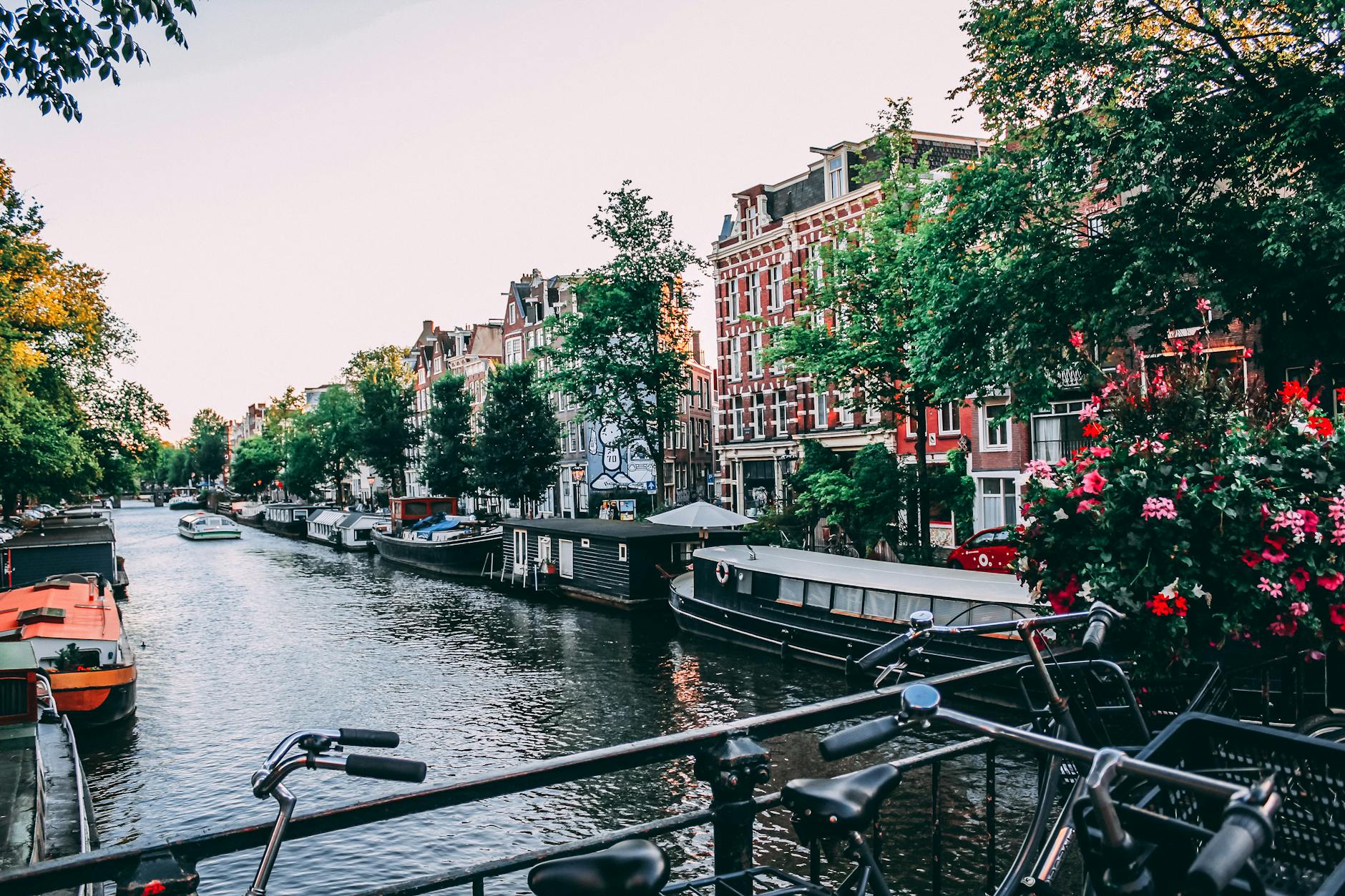A quick meeting with the group was had on Monday to brain storm ideas, during which a new research theme was proposed.

After choosing a theme for our research,1 we spent time over Christmas to think over it, confirming that it is defiantly the right subject for us to research. Questioned the methods we will use, how easy it will be, and the main ideas we will focus on while we are in Amsterdam. During this time many questions came up as to whether that was the right choice. It seemed a safe choice for us to choose due to the past research modules we have had in the previous 2 years where majority of us in the group studied mostly university students and aspects of their lives, therefore other ideas were thrown into the mix.
Other themes and ideas:
- Cultural Diversity and Integration in Amsterdam2:
- Investigate the experiences of different ethnic and cultural groups in Amsterdam and how they navigate integration and multiculturalism in the city3.
- Gentrification and Urban Development4:
- Examine the impact of gentrification on various neighbourhoods in Amsterdam, considering changes in demographics, social dynamics, and the displacement of long-term residents5.
- Housing and Homelessness6:
- Explore the challenges faced by Amsterdam residents in terms of housing affordability, homelessness, and the effects of housing policies on different social groups7.
- Social Media and Identity Formation8:
- Study how social media platforms influence the construction of identity and social relationships among the diverse population in Amsterdam9.
- Drug Policies and Social Behaviour10:
- Investigate the effects of Amsterdam’s liberal drug policies on social behaviours, public health, and community dynamics11.
- Sexuality and LGBTQ+ Rights12:
- Examine the experiences of the LGBTQ+ community in Amsterdam, focusing on social acceptance, discrimination, and the impact of policies supporting LGBTQ+ rights13.
- Education Disparities14:
- Explore educational disparities in Amsterdam, considering factors such as socio-economic background, ethnicity, and neighbourhood characteristics15.
- Community Engagement and Social Capital16:
- Investigate the role of community engagement and social capital in fostering social cohesion within different neighbourhoods in Amsterdam17.
- Migrant Integration and Social Support18:
- Study the integration experiences of recent migrants in Amsterdam and the role of social support networks in facilitating or hindering their integration19.
- Environmental Activism and Social Change20:
- Examine the role of environmental activism in shaping social attitudes, behaviours, and policies in Amsterdam21.
The chosen theme and ideas:
However, after all our brainstorming, we decided to research how sustainable Amsterdam is and what sets it out from the crowd22. Often articles have stated that it is a city shaped by sustainability23: from its bikes and trams24 to the doughnut economic model25. Main themes of Amsterdam being the Sustainable city:
Transportation and Mobility
Amsterdam has been a global leader in promoting sustainable transportation and mobility26. The city has implemented various initiatives to reduce carbon emissions, improve air quality, and enhance overall urban sustainability 27. Amsterdam is renowned for its extensive and well-designed cycling infrastructure28. The city encourages cycling as a primary mode of transportation, with dedicated bike lanes, bike-friendly traffic signals, and ample bike parking facilities29. The promotion of cycling helps reduce traffic congestion and lowers carbon emissions30.
Various parts of Amsterdam have implemented car-free zones or restrictions on car usage31. This approach not only enhances pedestrian safety but also reduces air pollution and noise levels in specific areas.
Amsterdam is exploring and implementing smart mobility solutions, such as intelligent traffic management systems and digital platforms for efficient transportation planning32. These technologies aim to optimise traffic flow, reduce congestion, and enhance the overall efficiency of the transportation network33.

Green Spaces and Biodiversity
The city has a variety of parks, gardens, and natural areas that contribute to its green character34. Some notable green spaces in Amsterdam include35:
- Vondelpark: This is the most famous park in Amsterdam, offering a peaceful retreat for residents and visitors. It features ponds, lawns, playgrounds, and various sculptures.
- Amsterdamse Bos (Amsterdam Forest): Although technically located just outside the city, this large recreational area is a popular destination for outdoor activities. It includes forests, open fields, and waterways.
- Oosterpark: Situated in the eastern part of the city, Oosterpark is a diverse green space that hosts cultural events and festivals. It has a lake, walking paths, and sculptures.
- Westergasfabriek area: Once an industrial site, this area has been transformed into a cultural park with green spaces, walking paths, and recreational facilities.
Biodiversity in Amsterdam is supported by these green spaces, as well as initiatives to create wildlife-friendly urban environments36. The city has implemented measures to promote sustainable practices and protect natural habitats. Efforts have been made to increase the number of trees and green roofs, contributing to urban biodiversity37.
The city is very committed to green initiatives, including the promotion of green spaces and sustainable urban planning38. Integrating nature into the urban landscape contributes to a healthier environment and enhances the overall quality of life for residents.

Social Inclusion and Community Engagement
Amsterdam has been actively working on social inclusion and community engagement initiatives39. Amsterdam is a culturally diverse city with residents from various backgrounds40. The city is home to people of different nationalities, ethnicities, and religions. This diversity is reflected in the city’s social fabric. Urban policies are increasingly localized, stressing the role of neighbourhood social contacts in generating cohesion and citizen participation. Studies on ‘everyday’ multiculturalism also emphasize the neighbourhood as a meaningful place for encounters41. However, there remains a lack of understanding of how specific contexts condition encounters with difference42.

Doughnut Economy
The term “doughnut economics” is associated with the work of Kate Raworth, a British economist43. The model is not specific to Amsterdam but it provides a framework for sustainable and inclusive economic development that can be applied globally. The main goal is to create a society that ensures everyone’s basic needs are met while simultaneously operating within the ecological boundaries44. Through challenging the traditional economic focus and emphasing the need for balance between social well-being and environmental sustainability. By adopting this framework, policymakers, businesses, and communities can work towards a more holistic and regenerative approach to economic development.
Amsterdam, among other cities, has embraced the doughnut economics concept45. In April 2020, the city officially adopted the doughnut model as a tool for shaping its future policies46. Amsterdam’s aim is to become a socially inclusive and environmentally sustainable city by using the doughnut framework to guide decision-making and development strategies.

In conclusion, the research theme will centre on Amsterdam’s sustainability, focusing on transportation, mobility, green spaces, social inclusion, and the adoption of the doughnut economics model. Amsterdam leads globally in sustainable transportation, promoting cycling and implementing car-free zones. The city’s green character is evident in parks and biodiversity initiatives, contributing to urban well-being. Active efforts towards social inclusion and community engagement address Amsterdam’s cultural diversity. Notably, the adoption of the doughnut economics model in 2020 underscores the city’s commitment to a balanced, inclusive, and environmentally sustainable future, challenging traditional economic paradigms for holistic development.
Sources used:
- Campbell-John, Lauren., (2024) ‘Researching Amsterdam.’ Kaleidoscope Existence 15 January Available at: https://kaleidoscopeexistence.wordpress.com [Accessed 22 Jan. 2024] ↩︎
- OECD (2018), ‘Working Together for Local Integration of Migrants and Refugees in Amsterdam‘, OECD Regional Development Studies, OECD Publishing, Paris, Available at: https://doi.org/10.1787/9789264299726-en. [Accessed 22 Jan. 2024] ↩︎
- Rustomjee, H. (2020). ‘Studying in Amsterdam as a POC‘, Manchester: on the road. Available at: https://manchesterontheroad.com/2020/10/30/studying-in-amsterdam–as-a-poc/. [Accessed 22 Jan. 2024] ↩︎
- Bosch, Eva. (2015). ‘Gentrification in all boroughs of Amsterdam: Increasing land values and socio-spatial change, little direct displacement’. Territorio. 73. 23-29. Available at: https://doi.org/10.3280/TR2015-073004. [Accessed 22 Jan. 2024] ↩︎
- Booi, H. (2023). ‘Spillover of urban gentrification and changing suburban poverty in the Amsterdam metropolis’. Urban Studies, 0(0).Available at: https://doi.org/10.1177/00420980231192232 ↩︎
- Ridder, D. Jan., Kok, Arjan., Doorm, V. Marcella., (2017) Access to Homelessness services and housing in Amsterdam.Available at: https://www.feantsa.org/download/access-to-homeless-services-in-amsterdam6478753421177587927.pdf [Accessed 22 Jan. 2024] ↩︎
- Tanja (2014). ‘Homeless people in Amsterdam’., What’s up with Amsterdam. Available at: https://whatsupwithamsterdam.com/homeless-in-amsterdam/. [Accessed 22 Jan. 2024] ↩︎
- Dijkink, Gertjan, and Virginie Mamadouh. ‘Identity and Legitimacy in the Amsterdam Region.’ Amsterdam Human Capital, edited by Sako Musterd and Willem Salet, Amsterdam University Press, 2003, pp. 331–56. JSTOR, Available at: http://www.jstor.org/stable/j.ctt46mv3p.21. [Accessed 22 Jan. 2024]. ↩︎
- J., van D. (2013). ‘‘You have one identity’: performing the self on Facebook and LinkedIn’. Media, Culture & Society, [online] 35. Available at: https://dare.uva.nl/search?metis.record.id=396994. [Accessed 22 Jan. 2024]
- Boztas, S. (2022). ‘The drug trade has wrecked Amsterdam. UnHerd. Available at: https://unherd.com/2022/10/the-drug-trade-has-wrecked-amsterdam/. [Accessed 22 Jan. 2024] ↩︎
- Van Santen, D.K., Coutinho, R.A., van den Hoek, A. et al. ‘Lessons learned from the Amsterdam Cohort Studies among people who use drugs: a historical perspective.’ Harm Reduct J 18, 2 (2021). Available at: https://doi.org/10.1186/s12954-020-00444-6 [Accessed 22 Jan. 2024 ↩︎
- City of Amsterdam (2023) Policy: LGBTI rights Available at: https://www.amsterdam.nl/en/policy/policy-diversity/policy-lgbti-rights/ [Accessed 22 Jan. 2024] ↩︎
- COCI ‘(2009) ‘The social situation concerning homophobia and discrimination on grounds of sexual orientation in the Netherlands‘. Danish Institute For Human Rights (2009). Available at: https://fra.europa.eu/sites/default/files/fra_uploads/386-fra-hdgso-part2-nr_nl.pdf. [Accessed 22 Jan. 2024] ↩︎
- S. Scheider, S. Rosenfeld, S. Bink, N. Lecina, (2023) ‘Educational inequality due to lack of validity: A methodological critique of the Dutch school system’, International Journal of Educational Research, 117, Available at: https://doi.org/10.1016/j.ijer.2022.102097.[Accessed 22 Jan. 2024] ↩︎
- Kuyvenhoven, J., & Boterman, W. R. (2021). ‘Neighbourhood and school effects on educational inequalities in the transition from primary to secondary education in Amsterdam’. Urban Studies, 58(13), 2660-2682. Available at: https://doi.org/10.1177/0042098020959011 [Accessed 22 Jan. 2024] ↩︎
- VanHoose, Katherine & Savini, Federico. (2017). ‘The social capital of urban activism: Practices in London and Amsterdam’. City. 21. 1-19. Available at: https://doi.org/10.1080/13604813.2017.1325207. [Accessed 22 Jan. 2024] ↩︎
- Tillie, Jean. (2004). ‘Social capital of organisations and their members. Explaning the political integration of immigrants in Amsterdam’. Journal of Ethnic and Migration Studies – J ETHN MIGR STUD. 30. 529-541. Available at: https://doi.org/10.1080/13691830410001682070. [Accessed 22 Jan. 2024] ↩︎
- our.kinder.world. (n.d.). Newcomer Integration in the Netherlands. [online] Available at: https://our.kinder.world/appeal/newcomer-integration-in-the-netherlands [Accessed 22 Jan. 2024].
- OECD (2018). ‘Working Together for Local Integration of Migrants and Refugees in Amsterdam‘. OECD iLibrary. Paris: Organisation for Economic Co-operation and Development. Available at: https://www.oecd-ilibrary.org/urban-rural-and-regional-development/working-together-for-local-integration-of-migrants-and-refugees-in-amsterdam_9789264299726-en [Accessed 22 Jan. 2024].
- Reuters (2023) ‘Climate activists block Amsterdam highway in protest against ING‘ Available at: https://www.reuters.com/world/europe/climate-activists-block-amsterdam-highway-protest-against-ing-2023-12-30/[Accessed 22 Jan. 2024]
- Armiero, Marco., Paolo de Rosa, Salvatore., Turhan, Ethemcan., (2024) ‘ Loss, Damage and Radical Adaptation’. Urban Movements and Climate Change. Available at: https://www.aup.nl/en/book/9789463726665/urban-movements-and-climate-change [Accessed 22 Jan. 2024].
- I amsterdam. (2023). Sustainability in Amsterdam. [online] Available at: https://www.iamsterdam.com/en/conventions/key-sectors/sustainability. [Accessed 22 Jan. 2024]
- Fretwell, L. (2023). ‘Amsterdam: A city being shaped by sustainability‘. Buro Happold. Available at: https://www.burohappold.com/news/amsterdam-a-city-being-shaped-by-sustainability/#. [Accessed 22 Jan. 2024]
- Lisa (2022). ‘AMSTERDAM The sustainable capital‘. You Know! Boat Sorrento. Available at: https://www.youknowboat.com/en/amsterdam-the-sustainable-capital/. [Accessed 22 Jan. 2024]
- Nugent, C. (2021). ‘Amsterdam Is Embracing a New Economic Theory to Help Save the Environment. Could It Replace Capitalism?’, Time. Available at: https://time.com/5930093/amsterdam-doughnut-economics/. [Accessed 22 Jan. 2024]
- intertraffic (2023). ‘How cities are becoming greener and more liveable in the Netherlands’. Available at: https://www.intertraffic.com/news/how-cities-are-becoming-greener-and-more-liveable-in-the-netherlands. [accessed 24 Jan. 2023]
- Mora, Luca & Bolici, Roberto. (2017). ‘How to Become a Smart City: Learning from Amsterdam’. 10.1007/978-3-319-44899-2_15. [accessed 24 Jan. 2024]
- Bertolini, L., & le Clercq, F. (2003). ‘Urban Development without more Mobility by Car? Lessons from Amsterdam, a Multimodal Urban Region’. Environment and Planning A: Economy and Space, 35(4), 575-589. https://doi.org/10.1068/a3592 [Accessed 24 Jan. 2024]
- John Pucher & Ralph Buehler (2008) ‘Making Cycling Irresistible: Lessons from The Netherlands, Denmark and Germany’, Transport Reviews, 28:4, 495-528, DOI: 10.1080/01441640701806612 [Accessed 24 Jan. 2024]
- Elliot Fishman (2016) ‘Cycling as transport’, Transport Reviews, 36:1, 1-8, DOI: 10.1080/01441647.2015.1114271[Accessed 24 Jan. 2024]
- Nederveen, A. A. J., Sarkar, S., Molenkamp, L., & Van de Heijden, R. E. C. M. (1999). ‘Importance of Public Involvement: A Look at Car-Free City Policy in The Netherlands’. Transportation Research Record, 1685(1), 128-134. https://doi.org/10.3141/1685-17 [Accessed 24 Jan. 2024]
- Rijff, Ydze Y. (2020) ‘Effectiveness of Smart Mobility Interventions in the city of Amsterdam’. Bachelor thesis. Available at: https://frw.studenttheses.ub.rug.nl/3296/1/Bachelorproject_SPD_Ydze%20Rijff_3147878_Finalversion.pdf[Accessed 24 Jan. 2024].
- Benson, T., Duarte, F., Ratti, C. (2022). ‘Correction to: From Amsterdam to New Amsterdam to Amsterdam: How Urban Mobility Shapes Cities’. In: Chokhachian, A., Hensel, M.U., Perini, K. (eds) ‘Informed Urban Environments’. The Urban Book Series. Springer, Cham. Available at: https://doi.org/10.1007/978-3-031-03803-7_12 [Accessed 24 Jan. 2024].
- Anna Chiesura (2004) ‘The role of urban parks for the sustainable city’, Landscape and Urban Planning, 68(1),pp. 129-138 Available at: https://doi.org/10.1016/j.landurbplan.2003.08.003 [Accessed 24 Jan. 2024]
- Collins, Laura. (2022) ’10 Best Parks in Amsterdam for History and Serenity‘. Available at: https://www.timeout.com/amsterdam/things-to-do/best-parks-in-amsterdam. [Accessed 24 Jan. 2024]
- Cohen QM, Glaese M, Meng K, Geissen V, Huerta-Lwanga E. (2022) ‘Parks and Recreational Areas as Sinks of Plastic Debris in Urban Sites: The Case of Light-Density Microplastics in the City of Amsterdam, The Netherlands’. Environments. 9(1):5. https://doi.org/10.3390/environments9010005 [Accessed 24 Jan. 2024]
- Eroglu, Engin & Ak, Mehmet. (2016). ‘Ecological and Visual Planting Design Analysis. A Case Study of two Parks in Amsterdam’. Oxidation Communications. 39. 599-612. Available at: https://www.researchgate.net/publication/303306255_Ecological_and_Visual_Planting_Design_Analysis_A_Case_Study_of_two_Parks_in_Amsterdam[Accessed 24 Jan. 2024]
- Paulin, M., Remme, R. and de Nijs, T. (2019). ‘Amsterdam’s Green Infrastructure : Valuing Nature’s Contributions to People’. rivm.openrepository.com. Available at: https://rivm.openrepository.com/handle/10029/623099[Accessed 24 Jan. 2024].
- De Haas, Wim., Hassink, Jan., Stuiver, Marian., (2021) ‘The Role of Urban Green Space in Promoting Inclusion: Experiences From the Netherlands’, Frontiers in Environmental Science, 9, Available at: DOI=10.3389/fenvs.2021.618198
- UITERMARK, J., ROSSI, U. and VAN HOUTUM, H. (2005). ‘Reinventing Multiculturalism: Urban Citizenship and the Negotiation of Ethnic Diversity in Amsterdam’. International Journal of Urban and Regional Research, 29(3), pp.622–640. doi:https://doi.org/10.1111/j.1468-2427.2005.00614.x. [Accessed 24 Jan. 2024]
- Hoekstra, M.S. and Dahlvik, J. (2017). ‘Neighbourhood participation in super-diverse contexts: comparing Amsterdam and Vienna’. Urban Research & Practice, 11(4), pp.441–459. doi:https://doi.org/10.1080/17535069.2017.1390780. [Accessed 24 Jan. 2024]
- Mello Rose, F., Thiel, J., & Grabher, G. (2022). ‘Selective inclusion: Civil society involvement in the smart city ecology of Amsterdam’. European Urban and Regional Studies, 29(3), 369-382. https://doi.org/10.1177/09697764221092587[Accessed 24 Jan. 2024]
- Ross, Florian. (2020). ‘Kate Raworth – Doughnut Economics: Seven Ways to Think Like a 21st Century Economist (2017)’. Regional and Business Studies. 11. 10.33568/rbs.2409.
- Madeleine Wahlund & Teis Hansen (2022) ‘Exploring alternative economic pathways: a comparison of foundational economy and Doughnut economics’, Sustainability: Science, Practice and Policy, 18:1, 171-186, DOI: 10.1080/15487733.2022.2030280 [Accessed 24 Jan. 2024]
- Nugent, C. (2021). ‘Amsterdam Is Embracing a Radical New Economic Theory to Help Save the Environment. Could It Also Replace Capitalism? Illustration by Chris Dent for TIME.’ [online] Available at:https://rockspire.com/wp-content/uploads/2021/02/Amsterdam-Ecomomics.pdf.
- M. Cramer, Jacqueline., (2020) ‘Practice-based model for implementing circular economy: The case of the Amsterdam Metropolitan Area’, Journal of Cleaner Production, 255 Available at: https://doi.org/10.1016/j.jclepro.2020.120255 [Accessed 24 Jan. 2024]
Other sources used:

Leave a comment